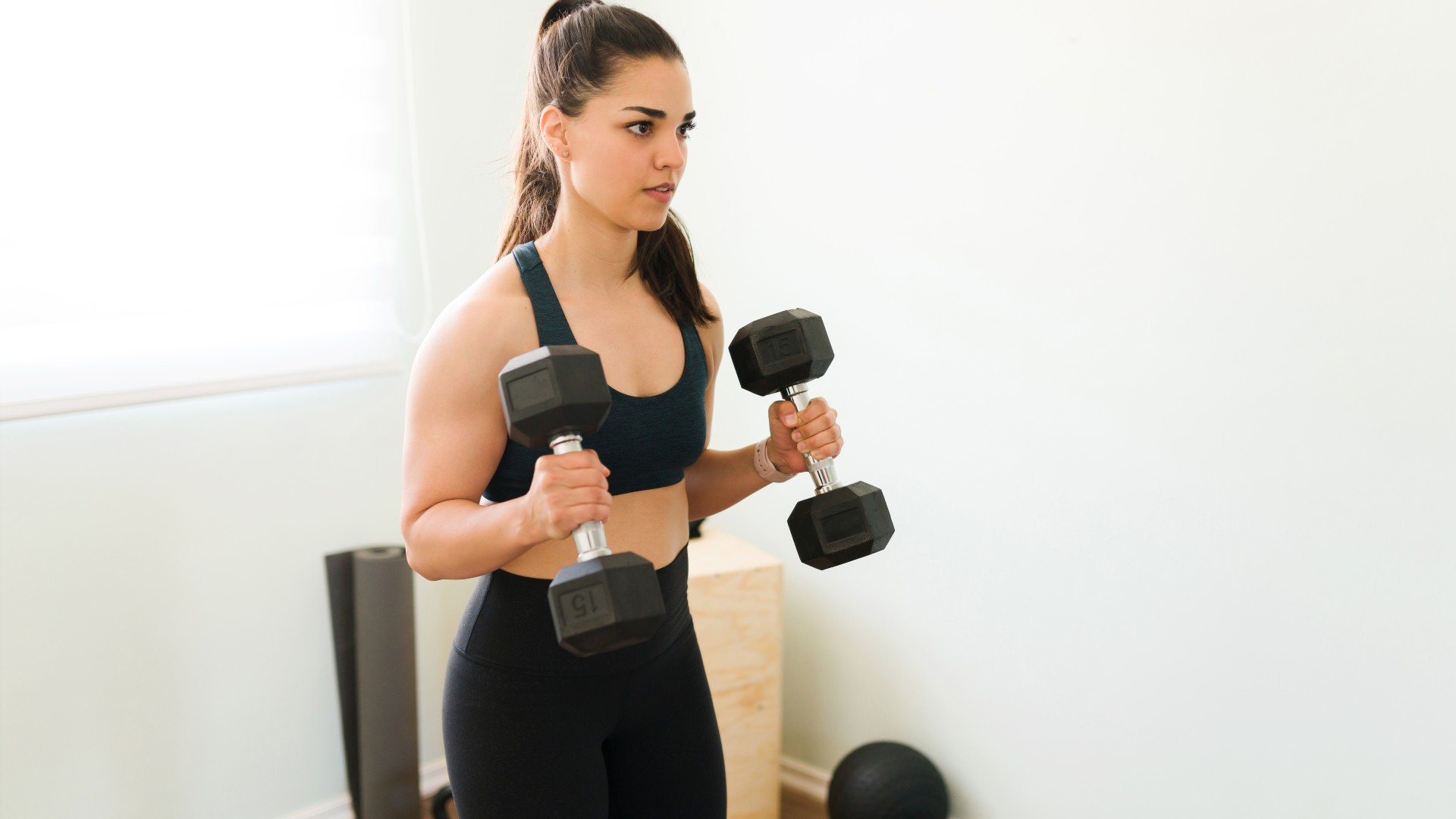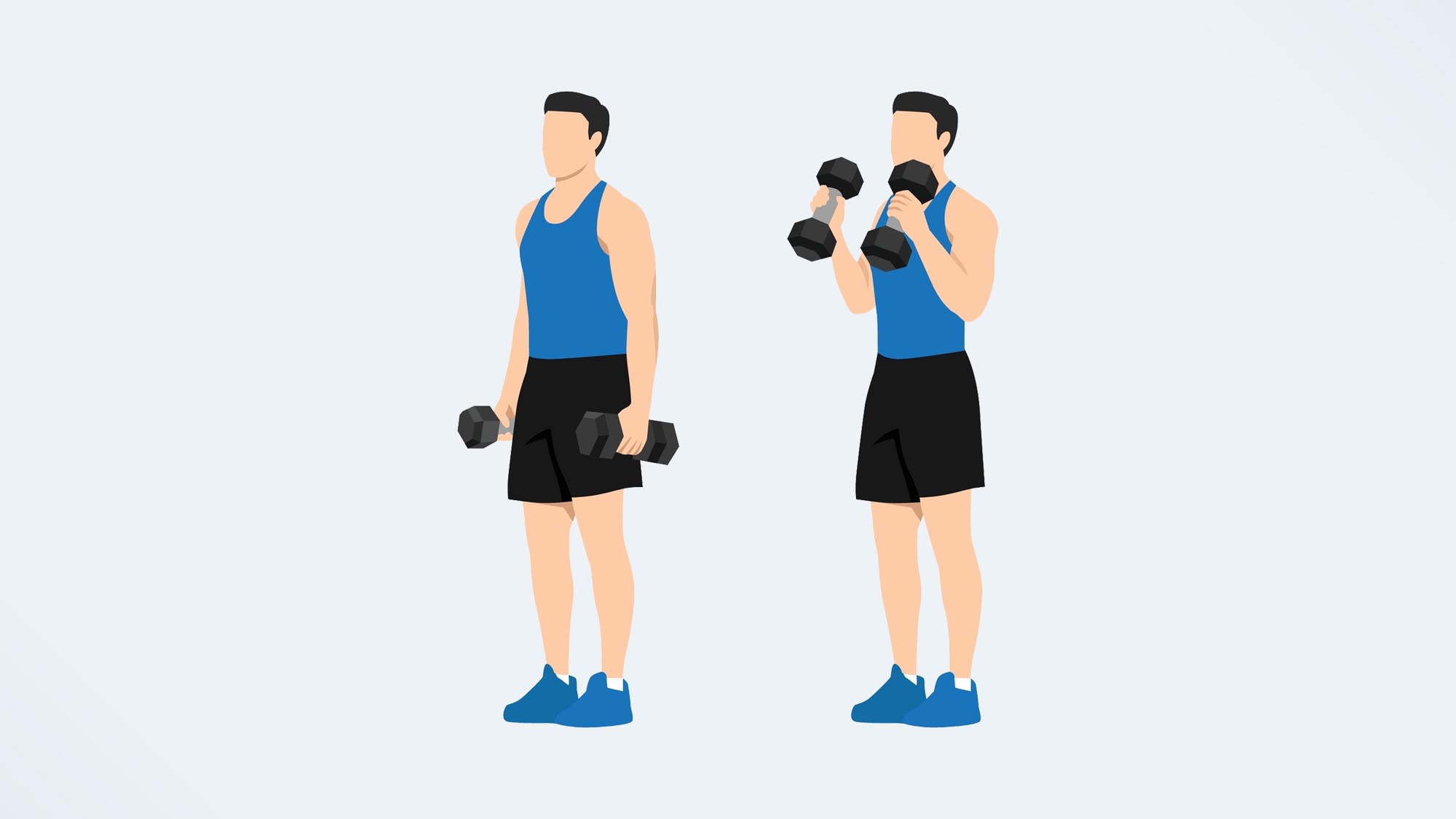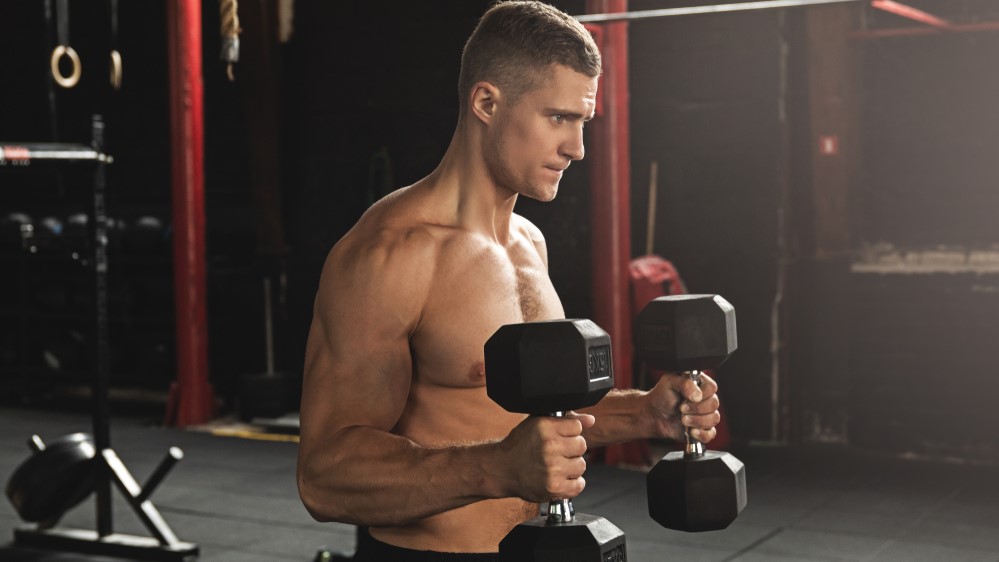
Like bicep curls, hammer curls target and strengthen your bicep muscles. But how do you do them with proper form? We’re here to break down your technique and build it back up — just like your biceps.
The difference between a bicep curl versus hammer curls is simple: both are single-joint, isolation exercises that target the biceps brachii, but hammer curls are a bicep curl variation, working the long head of the bicep, brachialis and brachioradialis (forearm muscles), whereas the bicep curl primarily hits the shorter bicep head. Most people can lift heavier with hammer curls.
Below, we cover how to do hammer curls with proper form and the most common mistakes made. We also jump into the benefits of hammer curls and why the bicep exercise is so effective at strengthening your bicep muscles. Grab a pair of the best adjustable dumbbells for weightlifting at home, and read on.
Hammer curls: Benefits
Bicep curls use an underhand grip, meaning the palms draw toward the shoulder during elbow flexion, isolating the bicep. But hammer curls stimulate the muscle heads differently.
By using a neutral grip (palms facing each other), the hammer curl primarily hits the long head of the biceps brachii, responsible for flexing the elbow, the brachialis and brachioradialis — your forearm muscle.
Another key difference is where you’ll notice muscle growth — bicep curls produce a muscle peak synonymous with the bulging biceps you see in photos.
Developing your forearms could improve your grip strength and wrist stability and help you lift heavier during strength programs or when holding lighter weights during muscle endurance sessions. Your forearms also support the upper limbs and complex arm, wrist and finger movement.
Sign up to get the BEST of Tom's Guide direct to your inbox.
Get instant access to breaking news, the hottest reviews, great deals and helpful tips.

The back and biceps duo naturally work together during pulling exercises. That means your biceps are active during deadlifts, bent-over barbell rows and pull-ups, and even day-to-day activities. And hammer curls are a staple within strength programs and hypertrophy (muscle-building) training. Find out what happened when our writer did hammer curls every day for a week here.
If you want to build stronger back and bicep muscles, compound exercises that hit multiple muscle groups (like the moves mentioned above) and isolation exercises like hammer curls are potent combos. But save isolation exercises for the end of your workout, as you don’t want to fatigue your biceps too early to assist during heavier lifts that hit larger, more powerful back muscles.
You can find out more about isolation vs compound exercises here.
How to do hammer curls

Here’s how to do a proper hammer curl.
- Stand with your legs hip-width apart and a soft knee bend
- Hold a dumbbell in each hand with your palms facing toward each other and thumbs facing forward
- Bend your elbows and lift the lower arms toward your shoulders
- Pause, then lower the weights back down to your starting position, extending your elbows
- Keep your abdominal muscles engaged throughout to prevent arching in the lower back.
Hammer curls: Common mistakes

These are the most common mistakes we see.
Swinging your arms
Keep the movement slow and controlled — the move should come from the bicep. Never swing the weights toward you, and keep your core braced as you move to avoid arching your back.
Lifting too heavy
If you swing the weight toward you, you’re lifting too heavy. Drop down a few pounds and lift with control rather than using your body weight to drive momentum. Not only could you prevent injury and improve your form, but your biceps will get far more from the exercise.
Reduced range of motion
Many people throw the move and end up achieving partial reps. Take your time to fully extend and flex the elbow, using a technique called time under tension, which keeps the muscle stimulated for longer and works it through its full range. This is a popular strength and muscle-building skill used by gym-goers.
That’s not to say partial reps don’t have a place in training regimes. Using a partial range of motion during curls has been shown by research to trigger muscle growth. According to the study, partial reps could help grow muscle through more significant hypoxia — a limited oxygen supply to the muscle tissue.
Hammer curls: Variations
Using a challenging weight, start with 3-4 sets of 8-15 reps. That means you can lift with good form without picking up the mistakes mentioned above, but the last few reps should be close to fatigue and hard to achieve.
Now — variations. The most obvious is the bicep curl, but there are a few other ways to spice up arm workouts. Here are two variations to try today.
Drag curls
Drag curls use a dragging motion and light grip on the bar or dumbbells to draw the weights up to sternum height rather than curling them toward your shoulders. You’ll reduce the range of motion and forearm involvement, primarily targeting the biceps brachii and brachialis. There’s also reduced shoulder pressure, but that shifts to your wrists and elbows instead.
Zottman curls
Zottman curls target the upper and lower arms, including your forearms and biceps, using changing palm positions. You’ll notice significantly more activation through your forearms using this move.
For even more ways to train your biceps, check out our recommendations below.
More from Tom's Guide

Sam Hopes is a level 3 qualified trainer, level 2 reiki practitioner and senior fitness writer at Tom's Guide. She is also currently undertaking her Yoga For Athletes training course. Sam has written for various fitness brands and websites over the years and has experience across brands at Future such as Live Science, Fit&Well, Coach, and T3.
Having worked with fitness studios like F45 and Virgin Active, Sam now primarily teaches outdoor bootcamps, bodyweight, calisthenics and kettlebells. She also coaches mobility and stretching-focused classes several times a week and believes that true strength comes from a holistic approach to training your body.
Sam has completed two mixed doubles Hyrox competitions in London and the Netherlands and finished her first doubles attempt in 1:11.
-
ccbarry38 The proper way to do hammer curls is to use heavy weights with strong contractions and to only come up until your elbows are at a 90° angle at most. Partial reps ARE the proper way because once you get past 90° your biceps start taking over. Plus your brachialis is a fast twitch muscle that requires a high load so by doing partials you can use more weight that fits the muscle better and focus on the actual muscle you're workingReply


